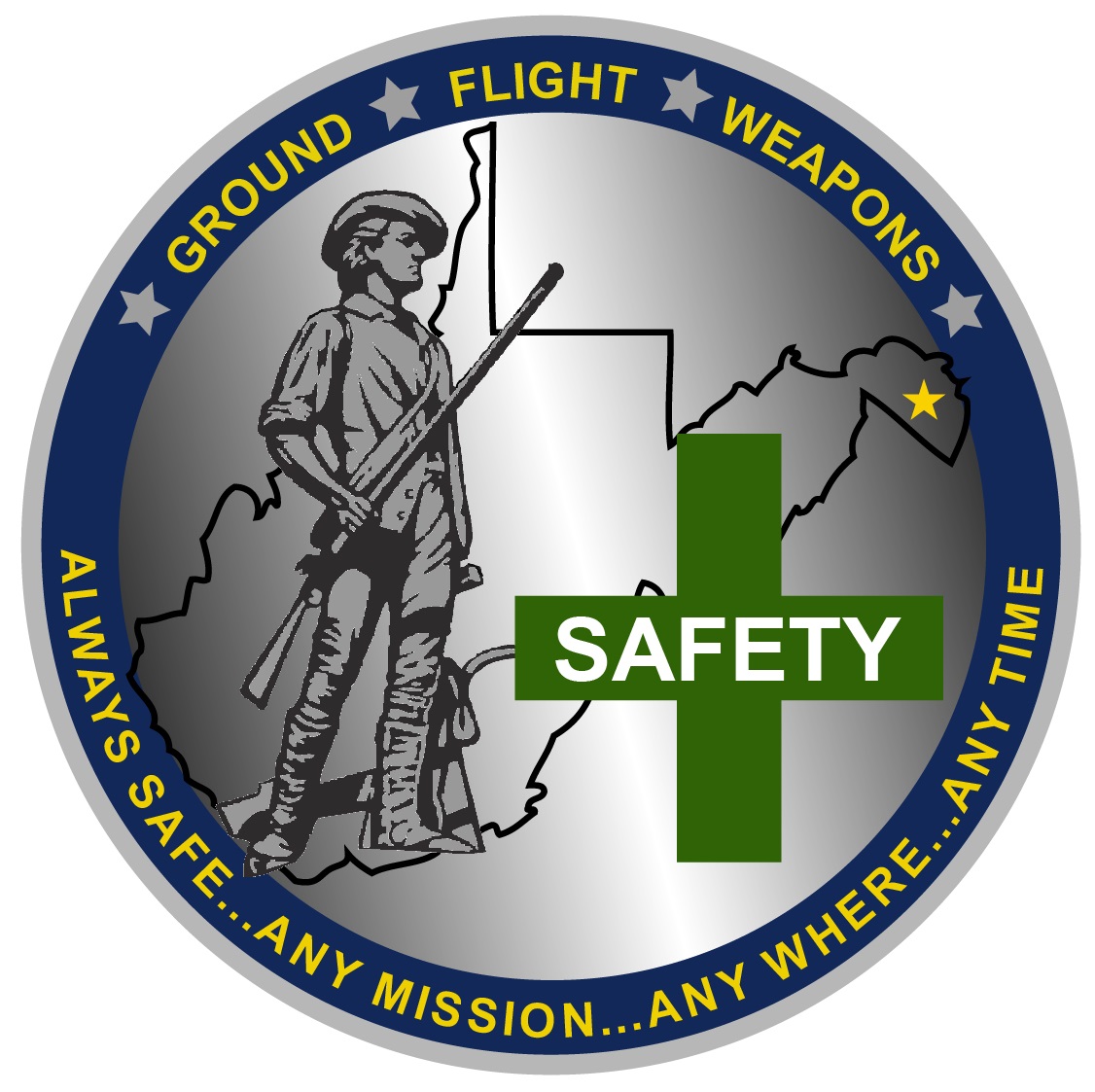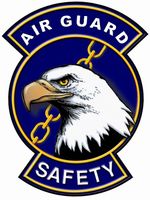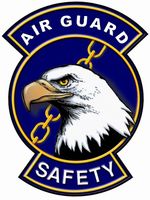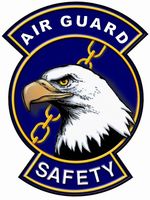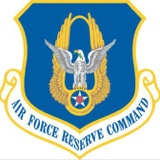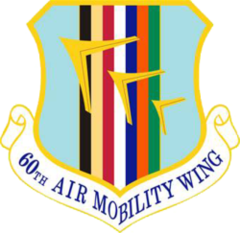Information
-
Audit Title
-
Conducted on
-
Squadron
-
Inspector
-
Location
-
Supervisor
1. Commander's Responsibilities
-
1.1. Does the commander ensure a proactive mishap prevention program is implemented to include procurement and proper use of PPE, and facility compliance with AFI and OSHA standards? AFI 91-202 1.8.21.2<br><br>AFI 91-202, Para 1.8.21.2
-
1.2. Has the Unit/Squadron commander appointed a primary and alternate Additional Duty Weapons Safety Representative (ADWSR) for weapons safety? AFI 91-202, Para 2.2
-
1.3. Does the commander actively implement and use risk management principles at all levels within the unit? AFI 91-202, Para 6.3 & AFI 90-802 6.3<br>
2. Mishap Reporting
-
2.1. Are individuals aware of mishap reporting procedures and how to identify and report hazardous conditions that place Air force personnel or property at risk?<br><br>AFI 91-202, Para 2.2.2.3
-
2.2. Do individuals report personal injury, property damage and any suspect exposure to biological, chemical or nuclear hazardous materials to their supervisor as soon as practical, but not to exceed 24 hours? AFI 91-202, Para 1.8.23.3<br>
-
2.3. Do supervisors emphasize reporting of all nuclear deficiencies? AFI 91-101, Para 2.13.2
3. Spot Inspections
-
3.1. Does the Unit Safety Representative (ADWSR) conduct spot inspections?<br><br>AFI 91-202, Para 2.2.2.2<br>
-
3.2. Does the spot inspection documentation include:<br><br>• The organization, unit, activity or work area inspected.<br>• The date and time of the inspection.<br>• The inspector’s name and their organization or office symbol.<br>• A brief description of the areas, equipment or processes/procedures reviewed as well as observations (may also include positive findings), hazards or unsafe work practices. When qualified safety personnel identify hazards, assign RACs as applicable.<br>• Causes of deficiencies and hazards, as noted.<br>• Recommendations for corrective action.<br>• Names and phone number of responsible person.<br>• Ensure appropriate follow-up actions (every 30 days) are conducted and documented until findings are closed.<br><br>AFI 91-202, Para 3.7.2
4. Locally Written Instructions
-
4.1. Are locally written procedures developed for all explosives operations not covered by Technical Orders or other safety briefings? AFMAN 91-201, Para 7.1
-
4.2. Are locally written procedures developed for explosives operations and contain all of the required elements: <br>(Virtual Inspection item)<br><br>• Personnel limits<br>• Explosives limits, including HD and CG of the explosives involved.<br>• Exact locations where operations will be done.<br>• Safety requirements, to include special requirements for personal protective clothing and equipment.<br>• Step-by-step procedures for doing the task<br>• Actions to be taken during an emergency. <br><br>AFMAN 91-201, Para 7.3
-
4.3. Has the squadron commander or equivalent approved all locally written instructions pertaining to explosives operations? AFMAN 91-201, Para 7.2.1.1
-
4.4. Are locally written instructions available at the work site? AFMAN 91-201, Para 7.2.1.3
-
4.5. Do personnel understand the procedures prior to beginning an explosives operation? AFMAN 91-201, Para 7.2.1.5
-
4.6. Are all workers briefed prior to beginning an explosives operation? AFMAN 91-201, Para 7.2.1.5
-
4.7. Are procedures in place to notify the Emergency Communication Center (ECC) each time firefighting symbols change? AFMAN 91-201, ANG Sup, Para 10.7.4<br>
-
4.8. Do written procedures pertaining to Training Involving Blank Ammunitions contain all required elements as outlined in AFMAN 91-201?AFMAN 91-201, Para 7.25 and AFMAN 91-201, ANG Sup, Para 7.25.1.1 – 7.25.1.5<br>
-
4.9. Are locally written instructions coordinated with the weapons safety office and all other involved organizations? AFMAN 91-201, Para 7.2.1.2
5. Explosives Safety Training
-
5.1. Is initial and reoccurring (every 15 months) explosives safety training given to all individuals who handle, transport, maintain, load or dispose of explosives? (Virtual Inspection item)? AFI 91-202, Para 9.11.2 & AFMAN 91-201, Para 7.4
-
5.2. Are all personnel who may be dispatched to work on explosives loaded aircraft received weapons safety training? AFI 91-202 para. 9.11.3.
-
5.3. Does the ADWSR ensure the following areas are integrated in to every explosive safety lesson plan? <br><br>1) General explosive safety requirements and philosophy. <br>2) Specific hazards involved with handling unit assigned explosives by class/division, to include personal protective equipment. <br>3) Transportation requirements to include unique handling precautions of explosives both on and off installation as applicable. <br>4) Fire fighting guidance for explosive operations and storage. <br>5) Personnel and explosive limits for storage and operations. <br>6) Emergency procedures to include mishap and evacuation procedures. <br>7) Use of simulators and smoke-producing munitions, if applicable. <br>8) Storage and compatibility requirements. <br>9) Maintenance on explosive-loaded aircraft IAW T.O. 11A-1-33, if applicable. <br>10) Mishap reporting procedures while at home station or deployed. <br>11) Electromagnetic Radiation hazards and Modern Mobile Emitter requirements.<br><br>AFI 91-202, Para 9.11.3
-
5.4. Are explosives safety trainers appointed in writing by the unit commander? (Virtual Inspection item)<br><br>AFI 91-202, ANG Sup, Para 9.11.3<br>
-
5.5. Are explosives identified as a hazard in sections one and/or two of the Job Safety Training Outline (JSTO)? <br><br>AFI 91-202, Para 1.8.25.5, and Attachment 4<br>
6. Transportation of Explosives
-
6.1. Are operators of vehicles transporting and handling explosives trained to transport explosives (JQS or AF Form 483)? AFMAN 91-201, Para 8.16.3 and AFI 24-301, Para 8.19.5<br>
-
6.2. Are two portable 2A:10BC rated fire extinguishers present on all explosive laden vehicles? AFMAN 91-201, Para 10.23.2
-
6.3. Are measures taken to ensure explosive laden vehicles are not left unattended? AFMAN 91-201, Para 8.29.3
-
6.4. Are operators of vehicles transporting and handling explosives trained and licensed to transport explosives off a military installation? AFMAN 91-201, Para 8.16.3<br>
-
6.5. Are all vehicles used for off-base shipments of explosive inspected by shipping activities before and after loading for compliance with safety regulations? AFMAN 91-201, Para 8.16
-
6.6. Are explosives loaded vehicles and material handling equipment (MHE) chocked when parked and driver is not behind the wheel? (Note: Chocking MHE is not required if the explosives load is lowered and completely resting on the ground) AFMAN 91-201, Para 8.21.1
-
6.7. Is an operating instruction approved for minimum essential personnel and limited quantities of HD 1.4, 1.3, and 1.2.2 explosives if transported together in the cargo portion of vehicles (including Metro type vans used on flightlines) or in vehicles used as runway supervisory units? AFMAN 91-201, Para 8.22.1
-
6.8. Are metal ammo-type containers used to transport EEDs in a vehicle with plastic bed liners bonded to the metal body of the vehicle? AFMAN 91-201, Para 8.23
-
6.9. If less than a single shipping package must be transported, are the explosives packed separately from other items in enclosed, clearly marked metal or wooden containers? AFMAN 91-201, Para 8.25
-
6.10. When a tow vehicle and trailer combination are used on base to transport explosives, is the lead vehicle placarded on the font and the last vehicle on the rear? (Note: Placard loaded vehicles in between on each side. Placards may be omitted for transporting HD 1.4 material on base) <br><br>AFMAN 91-201, Para 8.26.3
-
6.11. Are vehicles transporting Military Working Dog Explosives Search Training kits properly placarded? <br><br>AFMAN 91-201, Para 8.26.7
-
6.12. Is a prior to use inspection conducted on motor vehicles used to transport explosives? AFMAN 91-201, Para 8.27
-
6.13. For load protection and stability are safety chains fasten between towing vehicles and trailers carrying explosives when lunette and pintle fastenings are used? AFMAN 91-201, Para 8.28.3
-
6.14. Are explosives loaded on all types of vehicles and handling equipment stable and secure before movement? AFMAN 91-201, Para 8.28.8
-
6.15. For on base movements are explosives containers used to restrain, block brace, tie down or otherwise secure to the vehicle to prevent movement and damage to explosives or containers? <br><br>AFMAN 91-201, Para 8.28.8.
-
6.16. Are explosives loaded vehicles chocked during loading and unloading?<br><br>AFMAN 91-201, Para 8.29.1<br>
-
6.17. Are vehicles used for transportation of explosives properly placarded?<br><br>AFMAN 91-201, Para 8.26
7. Explosives License
-
7.1. Is a copy of the AF Form 2047 displayed at the licensed explosives storage location? AFMAN 91-201, Para 11.6
-
7.2. Has the license been coordinated through responsible Munitions Accountable System Officer (MASO), the local Security forces Resource Protection office and the Base Fire Protection agency? (Virtual Inspection item) AFMAN 91-201, Para 11.7.9.1
-
7.3. Are procedures in place to ensure the fire department is notified when explosive hazards change? AFMAN 91-201, Para 10.7.4
-
7.4. Are appropriate fire and chemical symbols posted on exterior and interior entrances to small rooms licensed for storing AE? AFMAN 91-201, Para 10.7.6.1
-
7.5. Are fire extinguishers readily available as specified on the license by the Base Fire Chief? AFMAN 91-201, Para 11.7.8.1<br>
-
7.6. Is the structure or room used for storage locked to prevent pilferage and unauthorized handling? AFMAN 91-201, Para 11.4.1
-
7.7. Is the AF Form 2047 reviewed annually for continued requirements and applicability? AFMAN 91-201, Para 11.8.3
-
7.8. Are fire and chemical symbols posted on the exterior of buildings containing licensed storage locations? AFMAN 91-201, Para 11.4.2 and 10.7.6.3
-
7.9. Are the backings for fire symbol decals the shape of the decal and made from non-combustible material? AFMAN 91-201, Para 10.5
-
7.10. Are appropriate fire and chemical symbols posted on lockers or containers licensed for storing AE? AFMAN 91-201, Para 11.4.2 and 10.7.6.2
-
7.11. Are unserviceable explosive components or items turned in to base munitions storage area as quickly as possible to preclude build-up of unserviceable NEWQD? AFMAN 91-201, Para 11.3.5
-
7.12. Are POV, GOV and AGE parking areas located a minimum of 100 feet from a licensed location? (Note: This minimum distance of 100 ft may be reduced to 50 ft if the PES is of non-combustible construction; a barrier sufficient to prevent the vehicle from rolling within 50 ft of the PES is located between the POV parking spaces and the PES.) AFMAN 91-201, Para 11.5.6.1
-
7.13. Are locally-written instruction approved by the unit or squadron commander (or equivalent) for the explosives license involving AE stored in a licensed explosives storage location? AFMAN 91-201, Para 11.9.1
-
7.14. Are personnel handling and grounding requirements met and included in written instructions if electro-explosives devices are stored at licensed locations? AFMAN 91-201, AFRC Sup, Para 11.9.1<br>
-
7.15. Is documentation maintained at the licensed location and unit safety office showing how mission essential quantities were determined? AFMAN 91-201, AFRC Sup, Para 11.3.6
8. Explosives Operations
-
8.1. Are written instruction available at the worksite for all explosives operations? (Note: Locally written instructions are not required for EOD emergency operations in connection with approved render safe procedures.) AFMAN 91-201, Para 7.2.1.3
-
8.2. Does the explosives operation meet the cardinal principle of explosive safety? (Note: Expose the minimum number of people to the minimum amount of AE for the minimum amount of time consistent with safety and efficient operations) AFMAN 91-201, Para 1.1.2 and 7.6
-
8.3. Are operations stopped when visitors are present? AFMAN 91-201, Para 7.5.4<br>
-
8.4. Do supervisors enforce personnel and explosive limits?<br><br>AFMAN 91-201, Para 7.5 & 7.6<br>
-
8.5. Is personnel protective equipment used, if required?<br> <br>AFI 91-202, Para 1.5.22.5 and AFI 91-203, Para 4.11
-
8.6. When handling unpackaged electro-explosive devices (EEDs) do personnel periodically ground themselves? AFMAN 91-201, Para 7.13.1<br>
-
8.7. Do personnel maintain a safe distance when using modern mobile emitters around electro-explosive devices (EEDs)? AFMAN 91-201, Para 9.30.4
-
8.8. Are only trained personnel under the supervision of an individual who understands the hazards and risks involved in the operation allowed to handle explosives? AFMAN 91-201, Para 7.9.1
-
8.9. Are personnel who work with explosives qualified in the tasks to be performed? AFMAN 91-201, Para 7.4
-
8.10. Is the supervisor knowledgeable of all hazards involved in the operation, convey emergency procedures to workers and visitor? (Note: The supervisor must know what steps to take when an abnormal condition arises.) AFMAN 91-201, Para 7.4
-
8.11. At locations were unpackaged electro-explosive devices (EEDs) are handled are signs posted at entrances and in the room reminding personnel that periodic ground is required (except where compliance would create any additional personnel safety hazard)? AFMAN 91-201, Para 7.13.1
9. Munitions Storage Area
-
9.1. Do units ensure explosives with mixed compatibility groups are stored properly? AFMAN 91-201, Para 7.46 & Table 7.1<br>
-
9.2. Is a grounded, covered self-closing container for munitions residue available? AFMAN 91-201, Para 7.7.2.1<br>
-
9.3. Is a “No Smoking Except in Designated Areas” or “no smoking” sign posted at each entrance to an explosives storage area? AFMAN 91-201, Para 7.8.2
-
9.4. Are detonators, initiators, squibs, and other such electrically or mechanically initiated devices kept in protective containers, designed to prevent item-to-item contact, and marked to identify the contents? AFMAN 91-201, Para 7.9.2
-
9.5. Are fire drills held within the explosives storage area at intervals not to exceed 6 months? AFMAN 91-201, Para 10.14.1<br>
-
9.6. Is there a 50 foot firebreak around each PES (except earth covered magazines) where environmental and security factors allow? AFMAN 91-201, Para 10.17
-
9.7. Is there a 5 foot fire break around earth covered magazine ventilators? <br><br>AFMAN 91-201, Para 10.17
-
9.8. Are only small stocks of flammable materials, such as paints and solvents required to support explosives maintenance operations properly stored?<br><br>AFMAN 91-201, Para 10.20.2
-
9.9. When operating support equipment (not including vehicles powered by internal combustion engines in AE locations) is the equipment located at least 25 feet from AE? AFMAN 91-201, Para 10.21 & 10.21.1.1<br>
-
9.10. Unless otherwise directed by the Base Fire Chief, are a minimum of two serviceable fire extinguishers, suitable for the hazards involved, available for immediate use at any location where AE are being handled (except as noted in AFMAN 91-201, Para 10.23.1 – 10.23.4)? AFMAN 91-201, Para 10.23
-
9.11. Is at least one fire extinguisher available for each item of powered material handling equipment used to handle AE? (Individual fire extinguishers are not required for each piece of handling equipment during explosive operations if the requirements of paragraph 10.23 are met; however, if handling equipment is used to transport explosives where a second fire extinguisher is not immediately available, two portable 2A:10BC rated extinguishers are required for the handling equipment. AFMAN 91-201, Para 10.23.3 – 10.23.3.2
-
AFMAN 91-201
-
9.12. Are firefighting symbols posted at each non-flightline sited explosives location and are they visible from all approach roads? <br><br>AFMAN 91-201, Para 10.7.7.1
-
9.13. Are individual fire/chemical hazard/apply-no-water symbols posted on each door of a multicube storage magazine when the multicube is sited as a multicube versus a single magazine? AFMAN 91-201, Para 10.7.7.3
-
9.14. Are the symbols removed or changed if the explosives or chemical agents are removed from a facility or location. Is the Emergency Communication Center (ECC) notified each time fire or hazard symbols are changed? AFMAN 91-201, Para 10.7.3 & 10.7.4<br>
-
9.15. Are the backings for fire symbol decals the shape of the decal and made from non-combustible material? (If heat from the fire burns off the numbers, the fire department can act on the shape.) <br>AFMAN 91-201, Para 10.5
-
9.16. In a non-hazardous location, are static bonding and grounding straps inspected visually for breaks and corroded connections quarterly? AFMAN 91-201, Para 5.13.4<br>
-
9.17. Is the depth of the earth cover on ECMs checked annually to ensure it is at least 2 feet deep? AFMAN 91-201, Para 5.58.1<br>
-
9.18. Are ventilators periodically checked to ensure they function properly? AFMAN 91-201, Para 5.58.2
-
9.19. Are fusible links checked periodically to ensure they are unpainted, serviceable, properly installed, and temperature-rated at 155*F to 165*F? AFMAN 91-201, Para 5.58.3<br>
-
9.20. Are personnel limits clearly posted for the operations being conducted at each explosives operating location? (Note: Posted limits will distinguish between supervisors, workers, and casuals. Locally written instructions containing personnel limits will suffice in lieu of posting.) AFMAN 91-201, Para 7.5.5
-
9.21. Are operating limits (HD and NEWQD limits) clearly posted at explosives operating locations for the operation being conducted, if less than the authorized explosives limits? (Note: Locally written instructions (see Section 7B) containing HD and NEWQD will suffice in lieu of posting.) AFMAN 91-201, Para 7.6.2
-
9.22. In explosives storage facility are structures in good condition and suitable for the storage of munitions types and hazard divisions involved? <br><br>AFMAN 91-201, Para 7.37.2<br>
-
9.23. Are training items (inert and live AE or munitions components) physically separated from live explosives they represent? AFMAN 91-201, Para 7.38.6<br>
-
9.24. Marking of Explosives Stocks – Are boxes properly closed and clearly marked to show contents and quantity? AFMAN 91-201, Para 7.39.1<br>
-
9.25. For dangerously unserviceable, unserviceable, or suspended lots, are packages or stack marked properly to show its exact status? AFMAN 91-201, Para 7.39.2
-
9.26. Are Modern Mobile Emitters prohibited within 10 feet of any exposed EEDs, or any weapons system containing EEDs? <br><br>AFMAN 91-201, Para 9.30.4
-
9.27. Are procedures in place to ensure Wireless Computer Network Equipment safe separation distance is 2.5 feet from all EEDs? AFMAN 91-201, Para 9.30.4.3<br>
10. Combat Arms Training Range
-
10.1. Are Range safety rules posted?<br><br>Range Safety Rules: <br>1. Treat all weapons as if they are loaded. <br>2. Holster, clear, or secure all weapons when they are not in use. <br>3. Keep the muzzle of the weapon under control at all times. <br>4. Do not point the weapon at anything you do not intend to shoot. <br>5. No horseplay while on the range or while handling weapons.<br>6. Do not handle weapons while personnel are down range. <br>7. Do not handle weapons until instructed to do so by the range official. <br>8. No smoking within 50 feet of the firing line.<br><br>AFI 36-2226, Para 2.4.3<br>
-
10.2. Are ranges inspected for safety deficiencies before firing each day? AFI 36-2226, Para 2.4.1<br>
-
10.3. Are only the instructors performing resource protection duties permitted to be armed when in the classroom or weapons cleaning area? AFI 36-2226, Para 4.5.1<br>
-
10.4. Does the Combat Arms NCOIC conduct a formal range inspection annually?<br><br>AFI 36-2226, Para 2.6.3
11. Flightline Munitions Holding Area
-
11.1. Is the flightline munitions holding area identified by a physical boundary (such as rope and stanchions)? <br><br>AFMAN 91-201, Para 7.31
-
11.2. Are signs posted to keep unauthorized personnel out of the area? AFMAN 91-201, Para 7.31<br>
-
11.3. Are signs posted to prohibit smoking within 50 feet? AFMAN 91-201, Para 7.31
-
11.4. Are explosive limits posted to ensure authorizations are not exceeded? AFMAN 91-201, Para 7.31
-
11.5. Are fire extinguishers provided? <br><br>AFMAN 91-201, Para 7.31<br>
-
11.6. Are fire symbols posted? AFMAN 91-201, Para 7.31
12. Lightning Protection System (Explosives Facilities)
-
12.1. Are personnel from the testing agency familiar with lightning protection systems? AFI 32-1065, Para A5.2
-
12.2. Are tests/inspections accomplished at the required frequency at all Non-hazardous Explosive Areas? <br><br>Action Required: (Frequency/Responsibility)<br><br>Visual inspection of static wire bonds: (Quarterly/User)<br>Continuity check on static bond from equipment to static ground: (24 Months/User)<br>Visual Inspection of lightning protection: (12 Months/BCE)<br>Resistance check on lightning protection earth ground system: (24 Months/BCE)<br>(25 ohms max except ground loop system) <br>Continuity check on air terminals, bonds, and conductors (1 ohm): (24 Months/BCE)<br>Static bus bar continuity to ground: (24 Months/BCE)<br> <br>AFI 32-1065, Table 1
-
12.3. Are personnel conducting tests familiar with the location of test points and the relationship between various components of the system being tested? AFI 32-1065, Para A5.8<br>
-
12.4. Are test and inspection records kept for a minimum of six inspection cycles? AFI 32-1065, Para 4.3 & AFMAN 91-201, Para 5.24.3
-
12.5. Are repair actions taken to render the facility safe? AFI 32-1065, Para A5.10
-
12.6. Is the lightning protection system (LPS) visually and physically inspected? AFI 32-1065, Para 9
-
12.7. Does lightning protection recordkeeping contain the following information: A sketch of the grounding and lightning protection system showing test points, and where services enter the facility? Does the sketch also show the location of the probes during ground resistance test. <br><br>•Date action was performed.<br>•Inspector’s or tester’s name.<br>•General condition of air terminals, conductors, and other components.<br>•General condition of corrosion protection measures.<br>•Security of attachment for conductors and components.<br>•Resistance measurements of the various parts of the ground terminal system.<br>•Variations from the requirements of AFI 32-1065.<br>•Discrepancies noted and corrective actions taken.<br>•Date of repairs. <br><br>AFI 32-1065, Para 4.1
-
12.8. Is surge protection in place for all incoming conductors? AFMAN 91-201, Para 5.23.5<br>
-
12.9. Are utilities buried underground for a minimum of 50 feet before entering the structure? AFMAN 91-201, Para 5.23.5
-
12.10. Is electrical conduit electrically connected/bonded to the LPS system or facility? AFMAN 91-201, Para 5.23.5
13. Weapons Handling (Clearing Barrel)
-
13.1. Is the floor area below the clearing zone covered by rubber or other resilient matting to help prevent damage or primer detonation of a dropped round? AFMAN 31-229, Para 3.2.3
-
13.2. Are written firearms clearing procedures posted above each clearing barrel for each type of government firearm stored in the arms room? AFMAN 31-229, Para 3.3
-
13.3. Are only the clearing barrel attendant and the individual clearing their weapons allowed within the clear zone at any given time? AFMAN 31-229, Para 1.3
-
13.4. Is the red line identifying the clearing zone painted, taped or incorporated into the floor tile pattern, and at least 4-inches wide? AFMAN 31-229, Para 1.3.1<br>
-
13.5. Is the clearing zone at least 6 feet wide (3 feet on either side of the clearing barrel’s centerline)? AFMAN 31-229, Para 1.3.3<br>
14. Explosives Ordnance Disposal (EOD) Training
-
14.1. Is the EOD training range limited to a maximum of 5 pounds of demolition explosives? AFMAN 91-201, Para 12.76.1<br>
-
14.2. Are only non-fragmenting charges, shaped charges, ordnance penetrators, and explosive powered tools used on the proficiency range? AFMAN 91-201, Para 12.76.1
-
14.3. Is the destruction point at least 500 feet from all above-ground facilities (including public highways, base boundaries, runways, taxiways, parking aprons and any PES)? AFMAN 91-201, Para 12.76.3.1<br>
-
14.4. Is the destruction point at least K-18 with a minimum distance of 100 feet from underground utilities? AFMAN 91-201, Para 12.74.6<br>
-
14.5. Is a barricade constructed within 10 feet of the destruction point to control ejection of debris? AFMAN 91-201, Para 12.76.2.1<br>
-
14.6. Is the barricade equivalent of two sandbags thick and at least 6 feet high? <br><br>AFMAN 91-201, Para 12.76.2.1
-
14.7. Are barricade entrances at 180 degrees separation? AFMAN 91-201, Para 12.76.2.2 <br>
-
14.8. If the destruction point can’t be at least 500 feet from facilities, is the range limited to 2.5 pounds of demolition explosives with a 300 feet clear zone? AFMAN 91-201, Para 12.76.3.2
-
14.9. If the destruction point can’t be at least 300 feet from facilities, is the range limited to 1.25 pounds of demolition explosives with a 200 feet clear zone? AFMAN 91-201, Para 12.76.3.3<br>
-
14.10. Are EOD proficiency range holding pads for additional training shots sited using aboveground magazine criteria? AFMAN 91-201, Para 12.76.8
-
14.11. Is Interline Distance (ILD) maintained to the destruction point and to the personnel control site? AFMAN 91-201, Para 12.76.8<br>
-
14.12. Is Intermagazine Distance (IM) maintained between each holding pad? AFMAN 91-201, Para 12.76.8<br>
-
14.13. When EOD personnel conduct off-range operations using the tools and explosives described in AFMAN 91-201, Para 12.772 and 12.77.3, is the specific location coordinated with the installation weapons safety office prior to the operation? AFMAN 91-201, Para 12.77.4.1<br>
Signatures
-
Report Routing
-
Supervisor Signature:
-
Notification
-
Superintendent Signature:
-
Notification
-
Commander Signature:
-
Notification
-
Safety Office Signature:
-
Notification
-
Wing Commander Signature:
-
Notification
